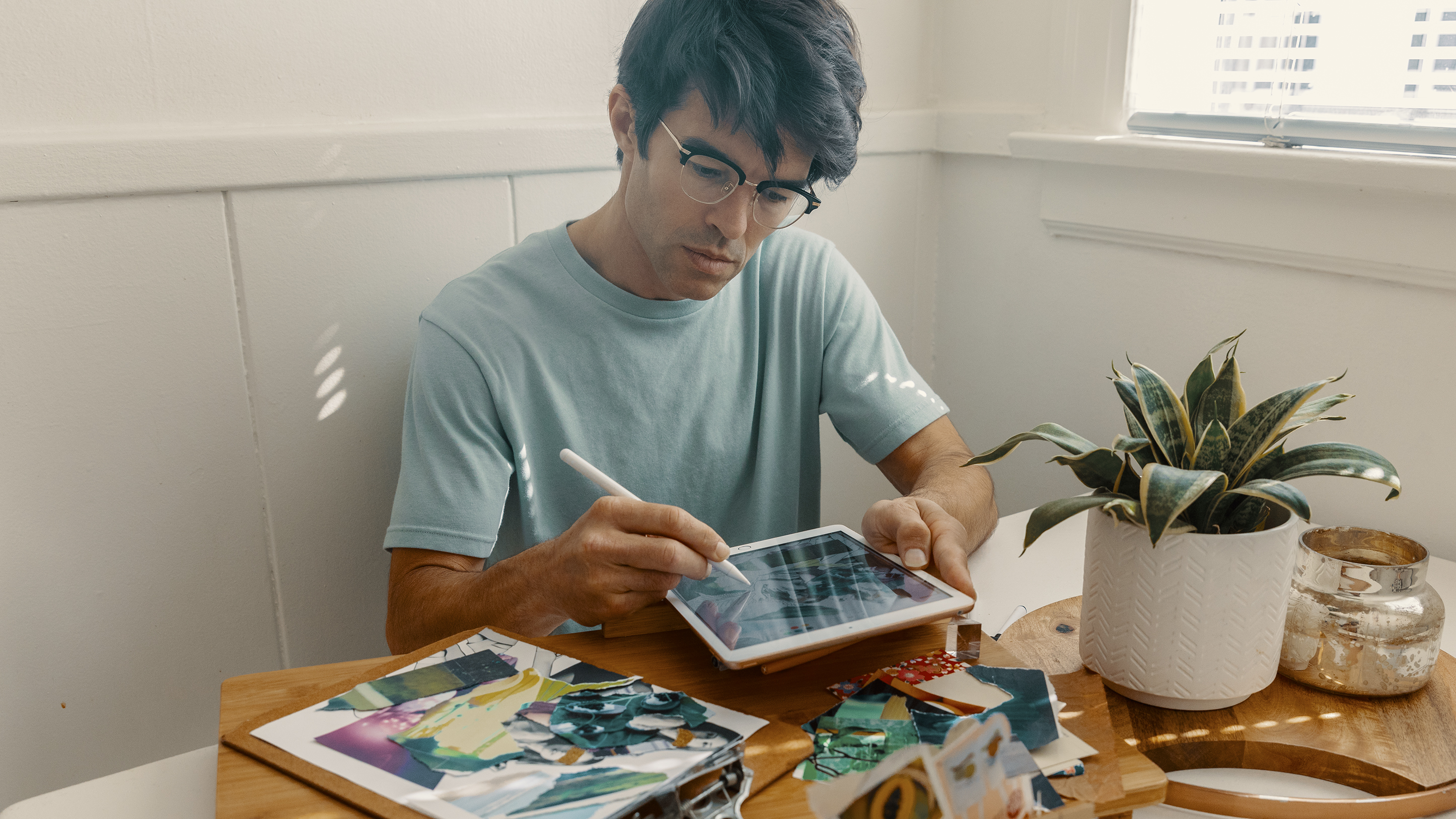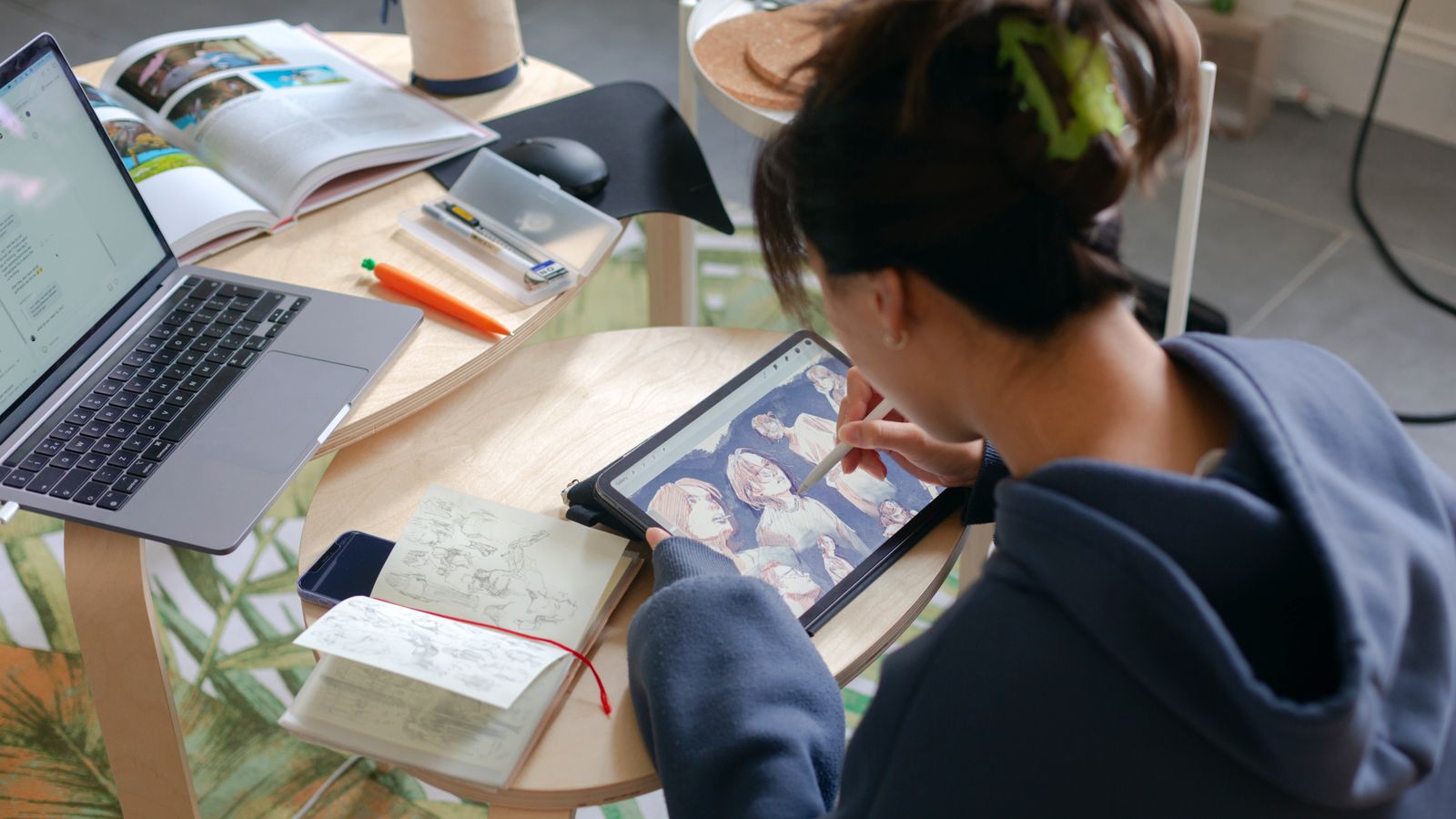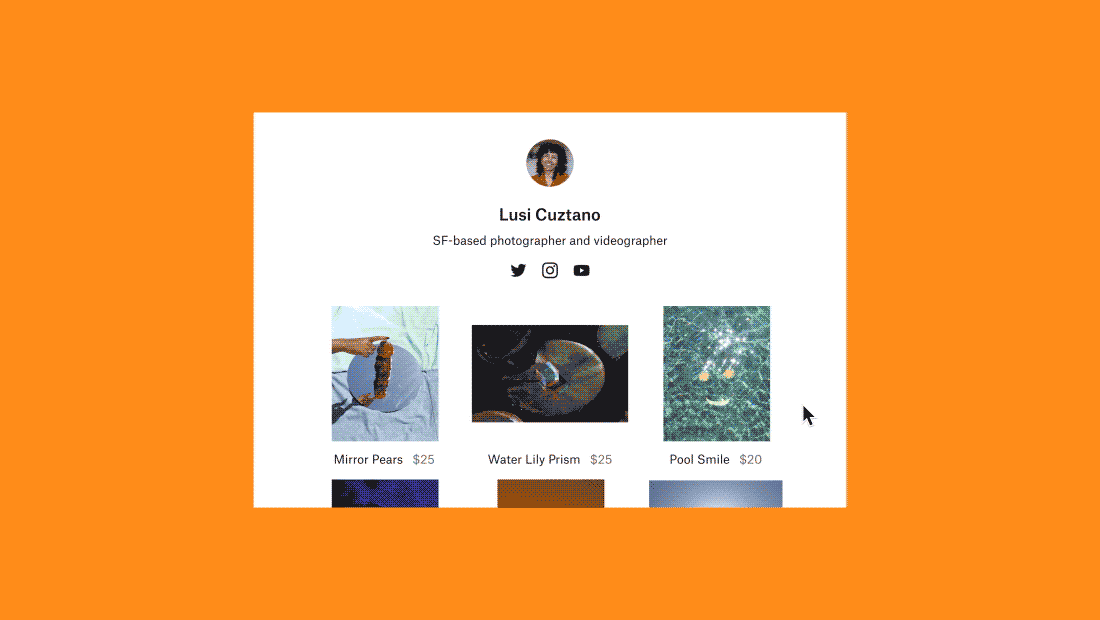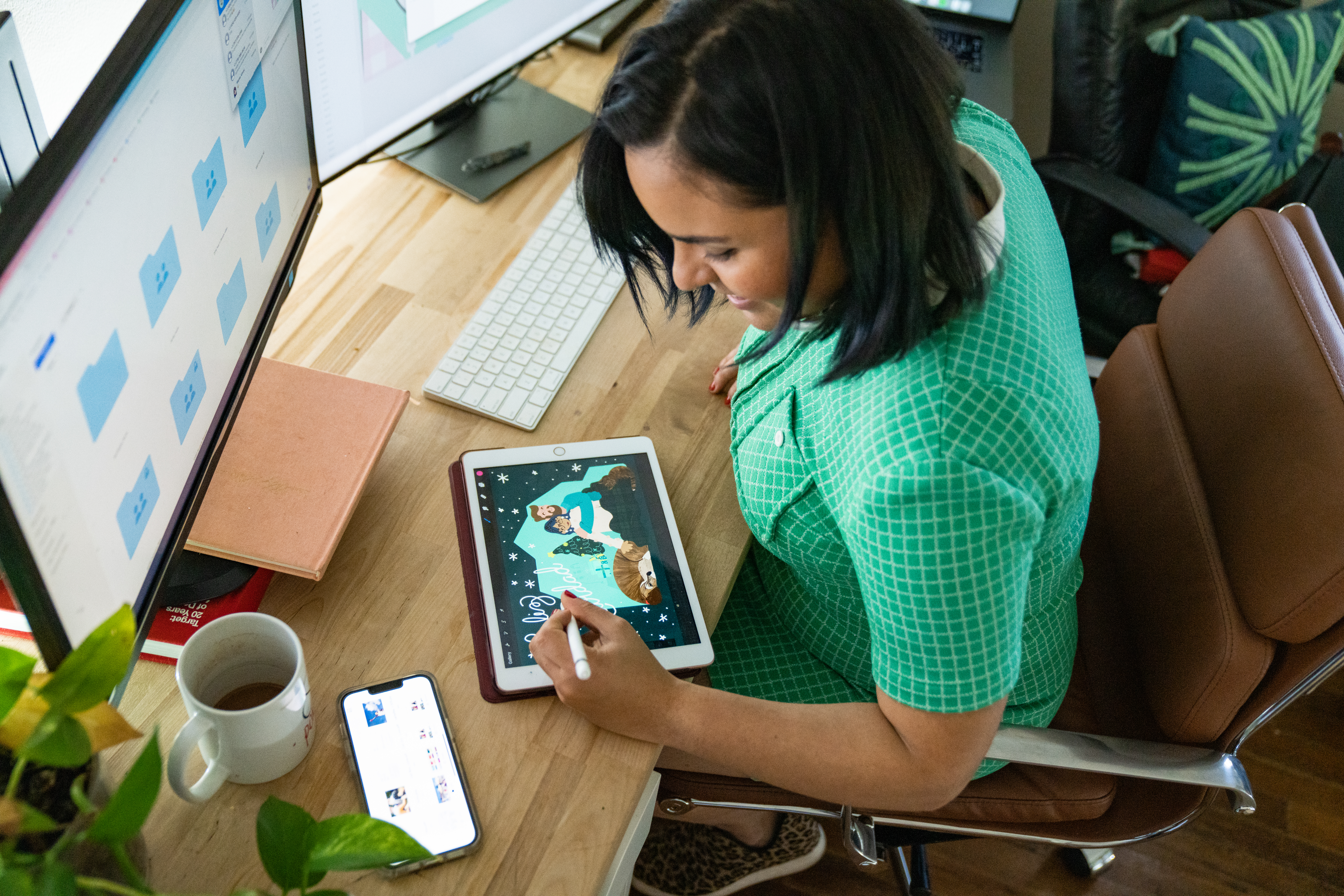In recent years, digital technologies have opened up a plethora of new creative opportunities for artists. As a result, creators are not only embracing new styles of art, but are also empowered to reach a wider audience than ever before.
The expansion of digital art hasn’t gone unnoticed by collectors and distributors. For example, the digital artist Beeple’s ‘EVERYDAYS: THE FIRST 5000 DAYS’ became the first purely digital artwork to be offered at Christie's – selling online for a monumental $69 million in 2021. With this, Christie’s became the first auction house to accept cryptocurrency.
This impressive feat highlights that creating and collecting digital art is no longer just an ambitious idea. As this booming industry continues to grow, how can you make yourself known in an increasingly crowded virtual space? A great place to get started is by creating your own online gallery.
But, before we dive into the details of starting a digital art gallery, there’s an important question we need to answer: why take your passion for art into the online world in the first place?
Modern art: Why go digital?
Digital technologies present a range of exciting possibilities for creators and collectors alike.
The online world provides a virtual space for exhibiting and selling work – a space that isn’t restricted by physical limits such as an in-person gallery.
This presents a number of benefits for creators:
- Digital art is quicker and cheaper to create and sell than traditional, in-person methods.
- The potential market for an artist and their work becomes almost limitless – you can reach previously untapped audiences beyond the boundaries of a city, region or country!
- With social media and other digital marketing tools, you can gain more exposure for your work – and for longer.
- Interested buyers can contact you directly for an artist statement, or more information about your collection or a particular art piece and get a quick response.
Likewise, many visionary art collectors and distributors recognise that the industry is increasingly embracing digital art. Digital art galleries are much easier (and cheaper) to manage and access than ‘real world’ galleries – not to mention much more immersive, especially when virtual reality technologies are involved!
Digital art could be the solution to the provenance problem
Digital artworks avoid many of the issues associated with physical art that have been a burden on the industry for many years. Namely, digital pieces solve the problem of provenance. There is no drop-off or pick-up involved with digital art, confusing its origins. And, importantly, NFTs being ‘non-fungible’ guarantees their authenticity and uniqueness.

Tips for creating a digital art gallery
Starting an online gallery to exhibit or sell digital art will require patience and thorough planning – but it doesn't need to be excessively complicated. Read on to find a simple process for launching a digital art gallery.
1. Choose your platform
There are a number of options available for hosting a digital art gallery. Which you choose will depend on your short- and long-term goals.
Additionally, if you’re going it alone, you’re probably running on a limited budget. As much as you would like to create a totally bespoke gallery experience, this may not be on the cards at this early stage – especially if you don’t have extensive web design and development experience.
The main types of platforms for virtual exhibitions and digital galleries are:
- Standard websites – your run-of-the-mill website will be fine for simply scrolling through static images, reading text and submitting enquiries. But they won’t create an immersive experience, nor will they support the buying and selling of art.
- Online art markets – some communities that market to art collectors are invitation-only, whereas other services are free or require a monthly fee.
- Dedicated digital content platforms – these come with a range of features to suit different kinds of creators, from virtual reality and ‘world-building’ software to solutions like Dropbox Shop that provide a space for showcasing and selling digital content.
Out of these three options, digital content platforms are more scalable and customisable. With Dropbox Shop, your art will be secure – you can even watermark your images to make sure your work isn’t used elsewhere without your permission.
2. Choose your art
One of the primary purposes of an art gallery is to curate. So, just because you’re going digital and aren’t limited by physical space in the ‘real world’, you shouldn't look to show absolutely everything you’ve created or collected.
Rather, you want to be more strategic with the art you choose. Emphasise your most important or standout pieces – ideally the ones that reflect your artistic style or creative vision in the most meaningful way for your intended audience.
If you have a large amount of artwork ready to go – great! You’ll have plenty of pieces lined up once you start selling. You could consider curating your work into collections or categories grouped by a theme, such as ‘love’ or ‘humour’.
Similarly, if you’ve produced commissioned work or one-off art pieces, you may want to display the pieces you’re particularly proud of to show off your talents.
All your images need to be high-resolution – you really want the art community to see the complexities of your work and be able to take in every possible detail. Prioritise making sure the pieces you are launching your gallery with are high-quality.

3. Create compelling copy
Of course, the first thing a prospective buyer or collector will notice about your art is how it looks. They might attach certain feelings or emotions to a piece, which they can’t quite explain.
This is where you come in – specifically, the descriptions you provide in the listings for your artwork. All art has a story, and this detail may be what hooks a buyer and seals the deal.
Every listing in your digital art gallery should have some strong supporting copy. This should not only describe what is happening in the piece or the story behind it, but also its technical details such as its dimensions.
Before you publish your listings, it’s a good idea to ideate your copy. Brainstorm your ideas and keep track of your drafts in Dropbox Paper. Then invite trusted peers to provide feedback, so you don’t end up publishing any embarrassing typos!
4. Work on your marketing
Social media is probably going to be your most powerful tool in marketing your digital gallery. Hosting your own gallery, you won’t have the same kind of resources a major industry name, museum or distributor would have.
Building your reputation and reaching your intended audience probably won’t be a one-time effort with overnight results. You’ll need a long-term strategy which lays out who your audience is and how you’re going to attract them to your gallery.
Does your audience use a variety of social media, or just one platform like TikTok? Will they engage with email newsletters? And what about the content on your website – will you have the time and capacity to manage a blog? Regularly writing on a blog can be a great way to showcase your expertise by talking about related topics and trends in the art industry.
If you’re in a creative partnership, use a collaboration tool like Dropbox Paper to share ideas and fine-tune your marketing messages. You can even create a to-do list to manage your marketing tasks and keep track of progress.
Social media is integral in the digital art world, and video content such as Instagram Reels presents an opportunity to get creative with your marketing efforts.
As part of your video production process, you can finalise your videos and produce your best work with tools like Dropbox Replay. For example, you can share videos for review with just a link, and receive frame-accurate feedback with on-screen mark ups. Meaning, you can spend less time sorting through feedback on your marketing, and more time creating or curating the art you love.
Craft your digital art gallery toolkit
To take your digital art gallery from an idea to a successful venture, you’ll need an innovative suite of tools. With Dropbox, you can plan, launch and manage your gallery all from one place.
By using Dropbox as your base, you can:
- Create a centralised space for fleshing out new ideas and development plans
- Use brainstorming templates, manage projects with to-do lists and gather feedback from peers in Dropbox Paper
- Share marketing videos and receive frame-accurate comments and on-screen mark ups in Dropbox Replay
- Protect your listings by adding watermarks to your images
- Manage a digital portfolio and sell content with Dropbox Shop
- Create new listings in just three clicks
- Simplify transactions for you and your customers
- Work on your gallery from your desktop, mobile phone or tablet

Plan, launch, and grow your digital art gallery – all from Dropbox
The Dropbox suite of tools and features provides the most effective base for starting – and growing – your digital art gallery.
Dropbox is designed to make working as productive, creative and efficient as possible. From storing your business plans in secure cloud storage to displaying your art in Dropbox Shop, Dropbox has a feature to help you take your digital art gallery to the next level.
Once your business expands, you can organise your growing team, collaborate on new content in real-time and even back up your entire computer – just in case the worst happens and you need to recover your files later.
